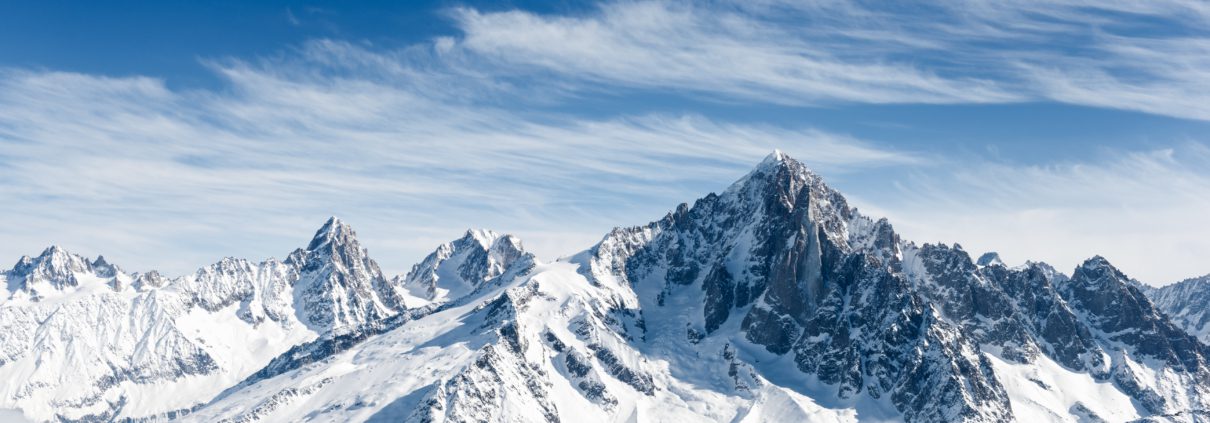Glaciers are pretty dam impressive, aren’t they? If you’ve never seen one up close, imagine looking out to the ocean, but it is made of ice. Glaciers are vast, brim valleys and demand your attention, no matter the time of year. Just last month, our marketing assistant, Mel, was trail running in the foothills of Mont Blanc, Chamonix, hoping to catch a glimpse of the glaciers surrounding the highest mountain in western Europe. But little did she realise, she was witnessing the effects of climate change…
Witnessing the Effects of Climate Change
It was a typical, hot summers day in Chamonix, and the sky was a beautiful clear blue. The trees were vibrant, and the birds were happily chirping away, as it’s still relatively quiet due to Covid-19 putting a stop to international travel.
Looking up from Chamonix town centre, I could see the luminous icy white spines from the glacial ice almost towering over me. That’s what I was here to see, but I wanted to get up close and personal.
During the winter months, the glaciers tend to blend in with the rest of the snow-covered mountains, so it’s easy to miss how huge they are. But in the summer, they stand out in contrast to the lush mountains surrounding them.
I’ve spent time on glaciers before, adventuring on skis, but I haven’t got up close to one in the summer. So I set off running to see what I could find.

To the glacier
The trails around Chamonix are well signposted, and I was excited that the sign read ‘Bosson Glacier 1km away”. So I stomped off, starting from the bottom of the valley to catch a glimpse of the Bosson Glacier. The trails were tight and winding, and I even passed a little refuge hut serving cold drinks and omelettes overlooking the valley where the glacier used to be. A little further up and the viewpoint was within reach.
As I reached the viewpoint, I had a stark realisation that the glacier was barely visible. After doing jumping jacks with my index and middle finger, zooming in as far as my iPhone could go. I turned back to head back down through the forest, feeling a bit deflated.
“I couldn’t believe how apparent the effects of climate change were, right in front of my eyes.”
But as I span around, I noticed another path, less trodden but heading in the direction of the glacier with a handmade sign reading ‘Bossom Glacier 25 minutes’. And with that, I continued up through the woods on this little track hoping to get a closer look at the glacier.
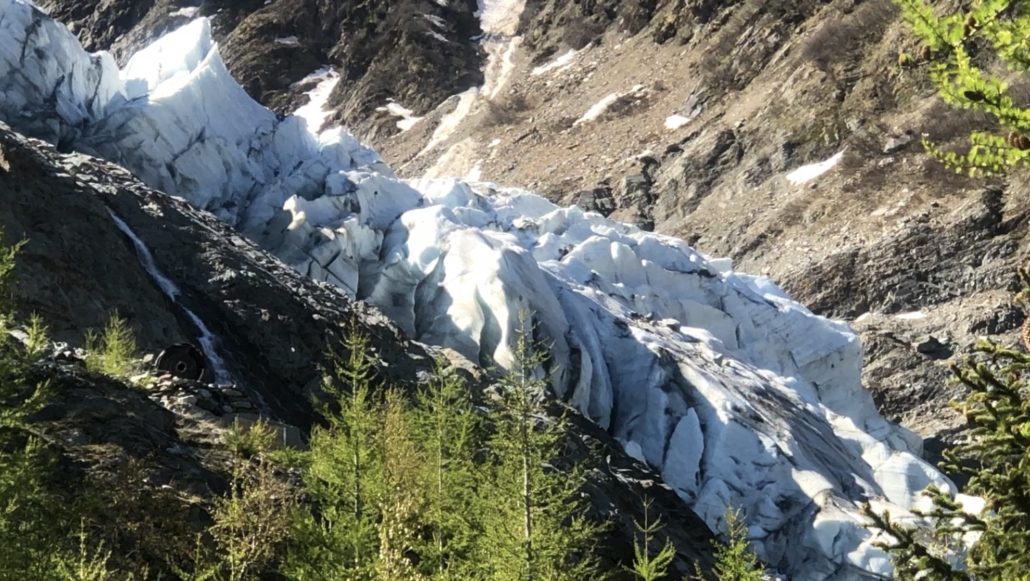
Up, up, up!
The following viewpoint was more significant and had obviously been there for a few years, although the path was less used. I got a much better view from here, but it was striking to see the valley gauged out by the glacier and the debris left behind. This never-ending path to the glacier viewpoint was a great representation of how much the ice has melted in the past 100 years alone. You might be thinking my story is a little dramatic, but the image below might explain my findings more obviously.
I’ve since read that the Mer de Glace (pictured below) is now melting at the rate of 40 metres a year. It has already lost 80 metres in depth over the last 20 years alone. So the speed of melting is accelerating rapidly.
It’s believed that human influence has very likely contributed to the decrease in Northern Hemisphere spring snow cover since 1950. If you’re interested to learn more, I recently found this fantastic article showcasing the comparison between old and new photos of the glaciers.
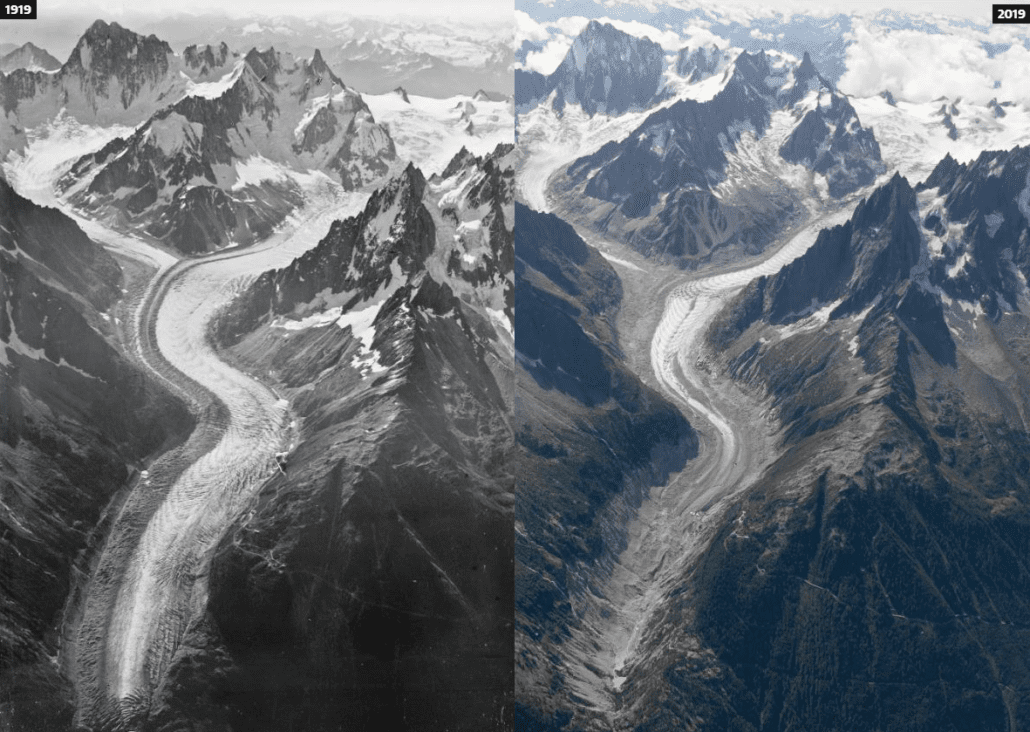
Photo: New Scientist
The Science Behind the Changes
Recently, the IPCC (International Panel on Climate Change) published a report on the current state of the climate. The IPCC’s mission is to assess the science related to climate change to help countries make better decisions going forward. One statement from the report stated:
“It is unequivocal that human influence has warmed the atmosphere, ocean and land. Widespread and rapid changes in the atmosphere, ocean, cryosphere and biosphere have occurred.”
After a summer of extremes, with fire, heat and floods. We’ve had heavy rainfall and devastating flooding across western Europe, long-lasting heatwaves in parts of Scandinavia and smoke-filled skies in Siberia affecting air quality. And not forgetting the unprecedented heat in North America which has triggered wildfires destructing so many habitats. The ski resort of Sierra-at-Tahoe has been using the snowmakers to help put out the fires.
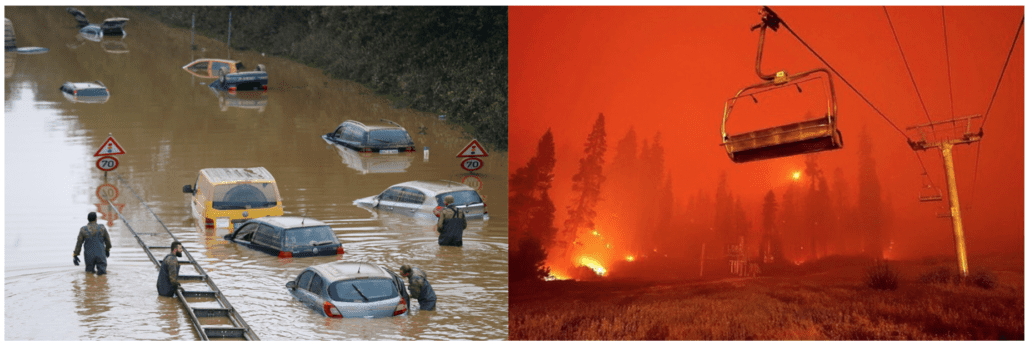
Photos: Aljazeera News & Protect Our Winters
What Can We Do?
Nobody is perfect, but if we all make small changes, we can help to protect our outdoor playgrounds for good. Just being aware of what’s going on, having the confidence to talk to others and making small changes, like cycling to work or ditching single-use coffee cups can make a huge difference.
We understand that sometimes you can feel insignificant, and if your efforts are making a difference, but know that they are. And together, we can all make changes to our future on this planet. We’re particularly passionate about this, as, without winters, there’s no skiing. We live and breathe winters, and skiing and snowboarding are what makes us tick.
Together, these small changes can make a big impact:
- Travel by train or electric vehicle. Avoid flying to reduce carbon emissions.
- When away from home, choose an accommodation provider that is making conscious decisions that are better for the environment.
- Simplify life by cycling or using public transport or choosing to use local amenities instead of driving further afield.
- Enjoy adventures and have a go at ski touring, to appreciate our world.
- Buy second-hand clothing or get your kit repaired! Most brands have a complimentary repair service, so it’s worth asking. Check out our circular uniforms in collaboration with One Tree At A Time who have been repairing and reusing our old uniforms.
- Respect the environment by leaving no trace, binning cigarette buts, picking up litter and respecting the environment.
- Ditch single-use, bring your own water bottle. For example, Heathrow airport has over 100 water refill stations. So bring an empty bottle through security and fill it up from the water stations in the airport. It’s cheaper and better for the environment.
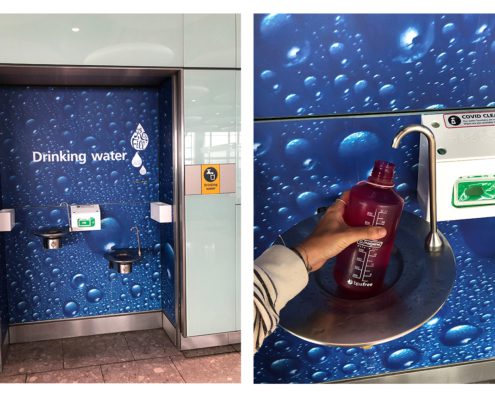
If you want to find out more on ways to be sustainable on your next ski trip, take a look at our list of sustainable ski trip ideas.
What We’re Already Doing?
Educating the next generation
A couple of years ago we ran EcoTribe lessons in Verbier for kids who wanted to learn about how they can look after the mountains. So they can continue skiing for years to come. It was a huge success and the kids learnt a lot about what’s going on in Verbier. We’re hoping to run these sessions again next winter, so get in touch if you’re kids are interested.
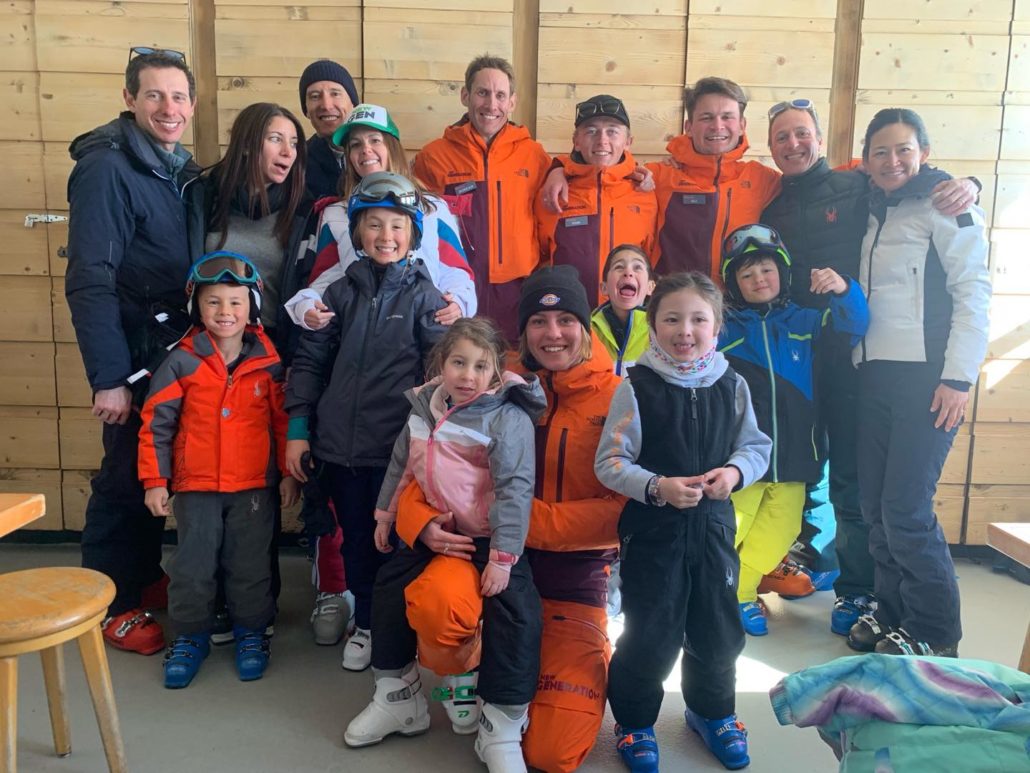
Our Pledge: Net Zero by 2028
We’re proud to be the first ski school to take the Protect Our Winters UK Pledge! By taking the POW Pledge, we’ve committed to being Net-Zero by 2028. Currently, we’re focused on reviewing our entire business operations and all the greenhouse gas emissions that we contribute to. We will then be systematically eliminating them so that we can hit our Net Zero target by 2028. We’ve already made some great progress in swapping energy providers and educating our staff. But we’re just beginning our journey, so watch this space.
We’re so inspired to be in an industry surrounded by many non-profit organisations that strive to turn outdoor enthusiasts into climate advocates. Protect Our Winters (POW), One Tree at a Time and Montagne Verte are all great examples of initiatives spreading the word on how we can make skiing and snowboarding more sustainable and limit the effects of climate change.
Our Obligation
As ski industry professionals, we have an obligation to do everything we can to protect our planet from the effects of climate change. We want to ensure that future generations are able to enjoy skiing as we are able to. And keep our climate to +2°C.

